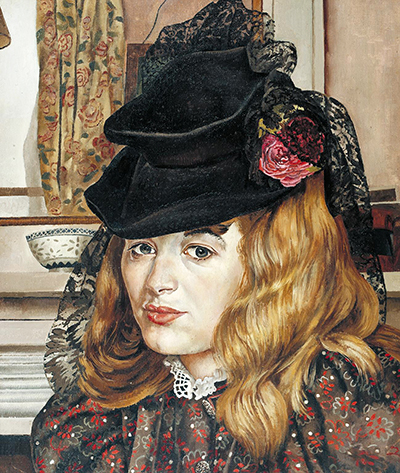Daphne by Stanley Spenser was painted over the month of April in 1940, and it depicts the artist's illicit lover. Stanley purchased a hat specifically for the work, and he had Daphne sit every day for about two weeks for this painting.
At the time of the painting, the two had been having an affair for about a year, and Stanley had just remarried after his divorce. Stanley would create many pieces showing Daphne, but this one was the most famous. It should be noted that Daphne was an artist in her own right. The painting depicts Daphne with a black hat and brown hair. Behind her, there is a bowl sitting under the curtains. This work can be compared to the Daphne Charlton painting that was completed on an unknown date between 1940 and 1949. The differences between the two are clear and may indicate that his attraction to Daphne was waning over time.
The piece was made using the oil on canvas technique, which has been noted to have many advantages over alternative methods. Since the paint takes longer to dry with this method, Stanley was able to work on it for a very long time as he made adjustments here and there. Also, with this technique, the painting was able to stay in good condition for a long time. Today, you can view it at the Stanley Spencer Gallery in Cookham. This gallery is particularly interesting since it exhibits all the paintings depicting Sir Stanley's affair with Daphne.
Other notable paintings by Spencer include Village Life, Gloucestershire (1940) and The Woolshop (1939). Besides women and his family, he liked to portray his home village of Cookham. One of his most popular works featuring the village is The Resurrection, Cookham. This painting was displayed in his first one-man exhibition in 1927 and was described by The Times as the most important picture completed by an English artist in the century. The setting of the painting is the Holy Trinity Church of the village, and Spencer is seen with his friends and family emerging from graves. Spencer was known to be a devout Christian, and that explains his inspiration for the painting. Stanley did not align himself with any art movement and preferred to work as an independent painter.




